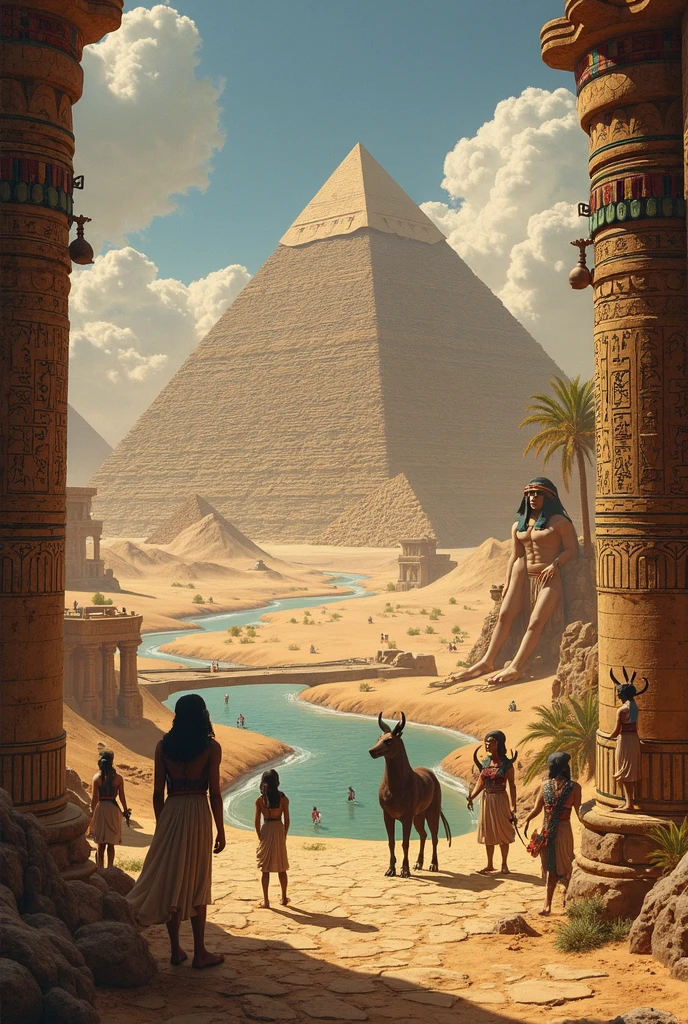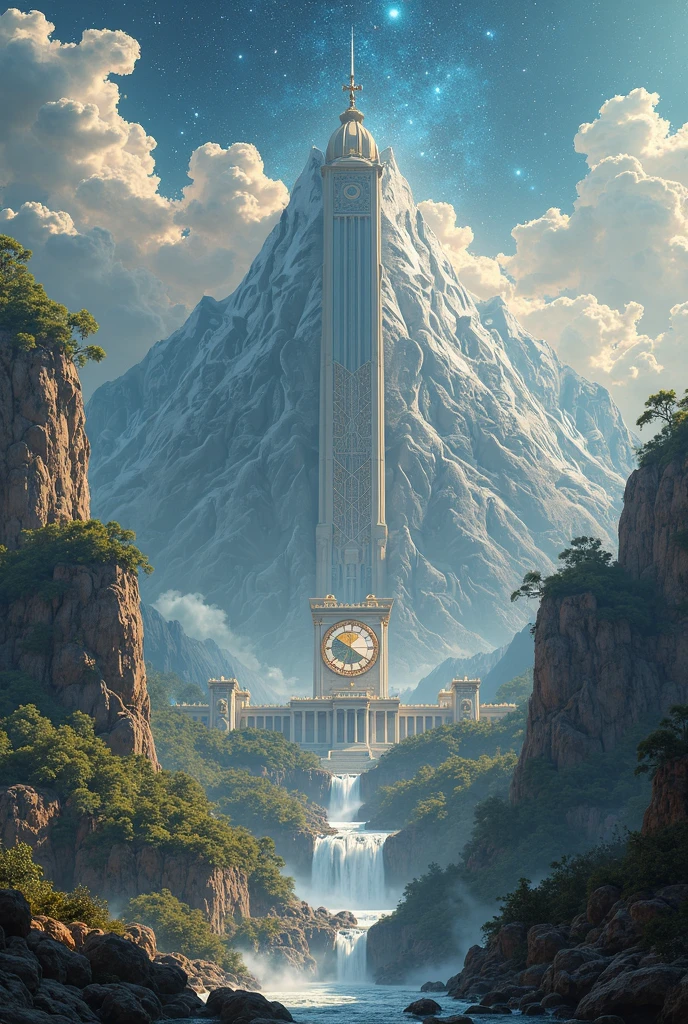Armenian Mythology: The Legend of Vahagn and the Cosmic Forces
Armenian mythology is a rich tapestry of gods, heroes, and cosmic battles, with Vahagn standing as one of its most iconic figures. Known as the god of fire, storms, and courage, Vahagn’s legend intertwines with dragons, celestial phenomena, and the very birth of the universe. This article explores his myths, symbolism, and enduring legacy in Armenian culture.
Who Was Vahagn?
Vahagn, often called the “Dragon Reaper,” was a warrior deity associated with strength and natural forces. Ancient texts describe his birth as miraculous—emerging from a reed in a fiery blaze, symbolizing his connection to fire and creation. His exploits include slaying dragons and controlling storms, making him a central figure in Armenian folklore.
Key Attributes of Vahagn
- Fire: Represented divine energy and purification.
- Dragons: Symbolized chaos; Vahagn’s victories restored balance.
- Storms: Linked to his role as a sky god.
- Courage: Embodied in his heroic battles.
The Cosmic Battle: Vahagn vs. the Dragons
One of the most famous myths involves Vahagn fighting cosmic dragons to protect humanity. These dragons, often depicted as serpentine monsters, embodied chaos and destruction. Vahagn’s triumph symbolized the victory of order over darkness, a theme recurring in Indo-European mythologies.
| Symbol | Meaning |
|---|---|
| Fire | Divine power, creation, and destruction |
| Dragons | Chaos and primal forces |
| Storms | Vahagn’s control over nature |
Vahagn’s Role in Armenian Culture
Beyond mythology, Vahagn influenced Armenian identity. Temples dedicated to him housed eternal flames, and his name appears in early Christian texts, showing his cultural persistence. The birth metaphor—his emergence from fire—also parallels Armenian resilience through invasions and hardships.
Modern Interpretations
Today, Vahagn inspires art, literature, and national pride. His imagery appears in:
- Poetry (e.g., Hovhannes Tumanyan’s works).
- Armenian pagan revival movements.
- Symbols of courage in military contexts.
Comparative Mythology: Vahagn and Other Indo-European Gods
Scholars compare Vahagn to deities like Indra (Hinduism) and Thor (Norse mythology), highlighting shared traits:
- Storm gods wielding thunderbolts.
- Dragon-slaying narratives.
- Associations with fire and heroism.
For deeper insights, explore Armenian History, Ancient.eu, or Britannica.
Descubre más artículos fascinantes y únete a nuestra comunidad en facebook.com/zatiandrops.
While Vahagn remains a central figure, Armenian mythology boasts a diverse pantheon of gods and goddesses, each governing different aspects of life and nature. Among them, Aramazd, the chief god, and Anahit, the goddess of fertility, stand out as pivotal deities. Their stories reveal the interconnectedness of cosmic forces and human existence in ancient Armenian belief systems.
Aramazd: The Supreme Creator
Aramazd, often equated with the Zoroastrian Ahura Mazda, was the father of gods and the creator of the universe. Revered as the source of wisdom and abundance, his influence extended over agriculture, justice, and cosmic order. Temples dedicated to Aramazd were centers of worship and learning, where priests interpreted divine will through rituals.
Attributes of Aramazd
- Creation: Believed to have shaped the world and mankind.
- Harvest: Patron of farmers, ensuring fertile lands.
- Justice: Oversaw moral laws and societal harmony.
Anahit: The Life-Giving Goddess
Anahit, the Armenian counterpart to Greek Artemis and Roman Diana, was the goddess of fertility, healing, and water. Her cult was widespread, with golden statues erected in her honor. Pilgrims sought her blessings for childbirth, health, and prosperity, making her one of the most beloved deities in Armenian tradition.
| Symbol | Meaning |
|---|---|
| Water | Purification and life-giving energy |
| Moon | Connection to feminine cycles |
| Golden Statues | Wealth and divine favor |
Lesser-Known Deities and Their Roles
Beyond the major gods, Armenian mythology includes lesser-known but equally fascinating figures:
Mihr: The God of Sun and Light
Mihr, associated with the sun and truth, was a guardian of oaths and contracts. His festivals, celebrated during the winter solstice, involved bonfires and communal feasts to honor the returning light.
Astghik: The Goddess of Love
Often linked to Anahit, Astghik symbolized love and beauty. Legends tell of her bathing in the Euphrates, scattering rose petals that turned into stars—a poetic explanation for the Milky Way.
Tir: The Divine Scribe
Tir served as the scribe of the gods, recording human deeds and guiding souls to the afterlife. He was also a patron of wisdom and writing, reflecting Armenia’s early literary traditions.
Mythical Creatures in Armenian Folklore
Armenian mythology is rich with fantastical beings, from benevolent spirits to malevolent monsters. These creatures often served as metaphors for natural phenomena or moral lessons.
- Devs: Malevolent giants symbolizing greed and destruction.
- Al: Shadowy spirits that haunted pregnant women and newborns.
- Nhang: Serpentine water demons that drowned unsuspecting victims.
Sacred Sites and Rituals
Ancient Armenians built temples and conducted rituals to honor their gods, blending mythology with daily life. Key sites included:
- Bagavan: A temple dedicated to Aramazd, where kings were crowned.
- Erez: A pilgrimage site for Anahit worshippers.
- Garni Temple: A Hellenistic-style structure honoring Mihr.
The Influence of Zoroastrianism and Christianity
Armenian mythology evolved through contact with neighboring cultures. The spread of Zoroastrianism introduced dualistic themes, while the adoption of Christianity in the 4th century CE transformed many pagan deities into saints or folkloric figures. For example, Vahagn’s fiery nature was later associated with Saint Gregory the Illuminator.
Syncretism in Armenian Beliefs
This blending of traditions is evident in:
- The reinterpretation of Anahit as the Virgin Mary.
- The survival of Vahagn’s legends in medieval ballads.
- Pagan festivals like Vardavar, which were adapted into Christian holidays.
Armenian Mythology in Literature and Art
The myths of Armenia have inspired countless works, from medieval manuscripts to modern paintings. Notable examples include:
| Art Form | Example |
|---|---|
| Epic Poetry | “David of Sassoun,” featuring heroic battles akin to Vahagn’s. |
| Miniature Painting | Depictions of Anahit in medieval Gospels. |
| Sculpture | Modern statues of Aramazd in Yerevan. |
The Legacy of Armenian Mythology Today
Armenian myths continue to resonate, serving as symbols of national identity and cultural pride. Organizations like the Armenian Pagan Council actively revive pre-Christian traditions, while scholars decode ancient texts to uncover lost narratives.
For further reading, visit Armenian History, The Met, or World History.
Descubre más artículos fascinantes y únete a nuestra comunidad en facebook.com/zatiandrops.
The Symbolism of Nature in Armenian Mythology
Nature played a central role in Armenian myths, with mountains, rivers, and celestial bodies often personified as deities or spirits. For instance, Mount Ararat, the national symbol of Armenia, was considered sacred—believed to be the resting place of Noah’s Ark and a dwelling of divine beings. Similarly, the Ara River was associated with the tragic love story of Ara the Beautiful and Semiramis, blending history with myth.
Sacred Natural Elements
- Mountains: Gateways to the divine, like Masis (Ararat).
- Springs: Healing waters tied to Anahit’s blessings.
- Oak Trees: Revered as symbols of strength and longevity.
The Epic of Ara the Beautiful and Semiramis
One of Armenia’s most enduring legends tells of Ara the Beautiful, a king whose beauty captivated the Assyrian queen Semiramis. When he rejected her advances, she waged war to claim him, leading to his death. In some versions, Ara is resurrected by the gods, symbolizing Armenia’s cyclical struggles and resilience.
| Character | Role |
|---|---|
| Ara the Beautiful | Mortal king embodying Armenian ideals |
| Semiramis | Foreign queen representing external threats |
| The Gods | Interveners in human fate |
Armenian Heroic Legends: David of Sassoun
The medieval epic David of Sassoun is Armenia’s national folk saga, echoing themes from older myths. Its heroes, like David and Mher, battle invaders and supernatural foes, mirroring Vahagn’s dragon-slaying exploits. The epic’s oral tradition preserved Armenian identity during foreign domination.
Key Themes in David of Sassoun
- Defiance: Resistance against oppression.
- Sacrifice: Heroes dying for their land.
- Legacy: Passing torches to future generations.
Mythological Influence on Armenian Festivals
Ancient myths shaped Armenia’s festive calendar, with rituals blending agrarian cycles and divine worship. Notable examples include:
- Navasard: New Year festival honoring Aramazd and Anahit.
- Vardavar: A water festival linked to Astghik’s love rituals.
- Trndez: Fire-jumping ceremonies inspired by Vahagn’s flames.
The Dark Side of Armenian Mythology: Evil Spirits
Not all mythological beings were benevolent. Armenians feared entities like:
- Kaj: Demonic figures causing nightmares.
- Aralez: Dog-like spirits that resurrected the dead (sometimes helpful).
- Piatek: A monstrous bird akin to the Roc.
Armenian Astral Mythology
Celestial bodies held divine significance. The sun (Arev) and moon (Lusin) were worshipped as siblings, with myths explaining eclipses as their quarrels. Stars, like the Pleiades, were seen as maidens fleeing danger.
Astral Deities and Symbols
| Celestial Body | Mythological Role |
|---|---|
| Sun (Arev) | Symbol of vitality and justice |
| Moon (Lusin) | Feminine energy and cycles |
| Morning Star | Herald of Mihr’s light |
Mythological Artifacts and Relics
Archaeological finds reveal artifacts tied to myths, such as:
- Dragon Stones: Carved monuments depicting Vahagn’s battles.
- Anahit Statues: Bronze figurines found in temple ruins.
- Sun Wheels: Symbols of Arev’s eternal cycle.
The Role of Women in Armenian Myths
Goddesses like Anahit and Astghik highlight the importance of women in Armenian cosmology. Mortal women, such as Shamiram (Semiramis), also played complex roles—both as nurturers and antagonists.
Notable Female Figures
- Anahit: Mother goddess and protector.
- Astghik: Embodiment of romantic love.
- Nuneh: A wise queen from folklore.
Armenian Mythology in Diaspora Communities
Armenian immigrants carried myths abroad, adapting them to new contexts. In the U.S., groups like the Armenian Folk Arts Federation stage plays based on David of Sassoun, while artists reinterpret Anahit’s imagery in diaspora paintings.
Unearthing Lost Myths: Modern Discoveries
Recent scholarship has revived obscure tales, such as:
- The legend of Hayk and Bel, a foundational battle myth.
- Tsovinar, a sea goddess linked to storms.
- The Vishap Stones, ancient dragon markers.
For deeper dives, explore Armenian Heritage, Carnegie Foundation, or Armenian Museum.
Descubre más artículos fascinantes y únete a nuestra comunidad en facebook.com/zatiandrops.
The Myth of Hayk and the Birth of Armenia
One of the most foundational myths in Armenian tradition is the story of Hayk, the legendary patriarch who gave his name to the Armenian people (Hay). According to ancient chronicles, Hayk rebelled against the tyrannical Babylonian god-king Bel, leading his people to freedom in the Armenian Highlands. His decisive victory—shooting Bel with an arrow—symbolized Armenia’s independence and defiance against foreign domination.
Symbolism in Hayk’s Legend
- The Arrow: Represented precision and divine justice.
- Mount Ararat: Hayk’s homeland, a sacred landscape.
- The Battle: Echoed in later conflicts like David of Sassoun.
The Vishap Stones: Dragon Monuments of Armenia
Scattered across Armenia’s highlands, the mysterious Vishap Stones (Dragon Stones) are towering basalt monoliths carved with fish or serpent motifs. Linked to pre-Christian water cults, these stones likely honored Vahagn or served as boundary markers against chaos. Some scholars theorize they were part of ancient astronomical observatories.
| Stone Type | Possible Purpose |
|---|---|
| Fish-Carved | Water deity worship |
| Serpentine | Protection from evil spirits |
| Unmarked | Celestial alignments |
Tsovinar: The Stormy Sea Goddess
Lesser-known but powerful, Tsovinar was the goddess of the sea and storms, often depicted riding waves with lightning in her hands. Unlike Anahit’s nurturing waters, Tsovinar’s domain was untamed—a reminder of nature’s dual capacity for creation and destruction. Fishermen invoked her for safe voyages, while poets compared her tempests to emotional turmoil.
Tsovinar’s Legacy
- Inspired Armenian maritime communities along Lake Sevan.
- Her name survives in the Armenian word for “storm” (tsov + nar).
- Linked to the Vishap Stones near water sources.
Mythological Beasts in Armenian Heraldry
Armenian noble families often adopted mythical creatures as symbols on their coats of arms:
- Griffins: Represented vigilance and divine power.
- Winged Lions: Combined Vahagn’s courage with Mihr’s solar energy.
- Serpent-Dragons: Signified wisdom and protection.
The Sacred Groves of Armenia
Before temples, Armenians worshipped in sacred groves, particularly oak forests believed to house divine spirits. These groves were sites of rituals, from solstice celebrations to judicial oaths. Cutting down a sacred tree was considered a crime against the gods—a belief echoing modern environmentalism.
Notable Groves
- Ashtishat: Associated with Aramazd’s cult.
- Hoghmik Forest: Linked to Anahit’s healing rites.
- Mush Plain: A pilgrimage site for Mihr worshippers.
Armenian Mythological Music and Chants
Ancient hymns, like those dedicated to Vahagn, were performed with instruments such as the duduk (wooden flute) and kamancha (spike fiddle). These melodies, often in the Dorian mode, were thought to channel divine energy. Modern composers like Komitas revived fragments of these sacred tunes.
| Instrument | Mythological Connection |
|---|---|
| Duduk | Mournful tones for Ara the Beautiful |
| Dhol (Drum) | Used in Vahagn’s battle dances |
| Kamancha | Astghik’s love ballads |
The Myth of the Seven Sleeping Brothers
This obscure legend tells of seven siblings who fled persecution by sleeping in a cave for centuries—a tale resembling Europe’s “Seven Sleepers of Ephesus.” Local variations connect them to underground deities or the Aralez spirits, blurring the line between Christian and pagan lore.
Armenian Alchemy and Divine Fire
Alchemists in medieval Armenia sought to replicate Vahagn’s sacred fire, believing it could purify metals and souls. Their experiments, documented in texts like the Book of Secrets, blended Zoroastrian mysticism with indigenous myths about transformative flames.
Alchemical Symbols
- Red Sulfur: Represented Vahagn’s fiery essence.
- Silver Moon: Anahit’s healing power.
- Golden Sun: Mihr’s illuminating wisdom.
Mythological Roots in Armenian Cuisine
Ritual foods preserved mythological themes:
- Gata: A sweet bread symbolizing the sun (Mihr).
- Harissa: A porridge offered to Aramazd for fertile fields.
- Pomegranate Wine: Associated with Astghik’s vitality.
For further exploration, visit Armenian Studies, Armenian Folklore, or Ancient Symbols.
Descubre más artículos fascinantes y únete a nuestra comunidad en facebook.com/zatiandrops.


